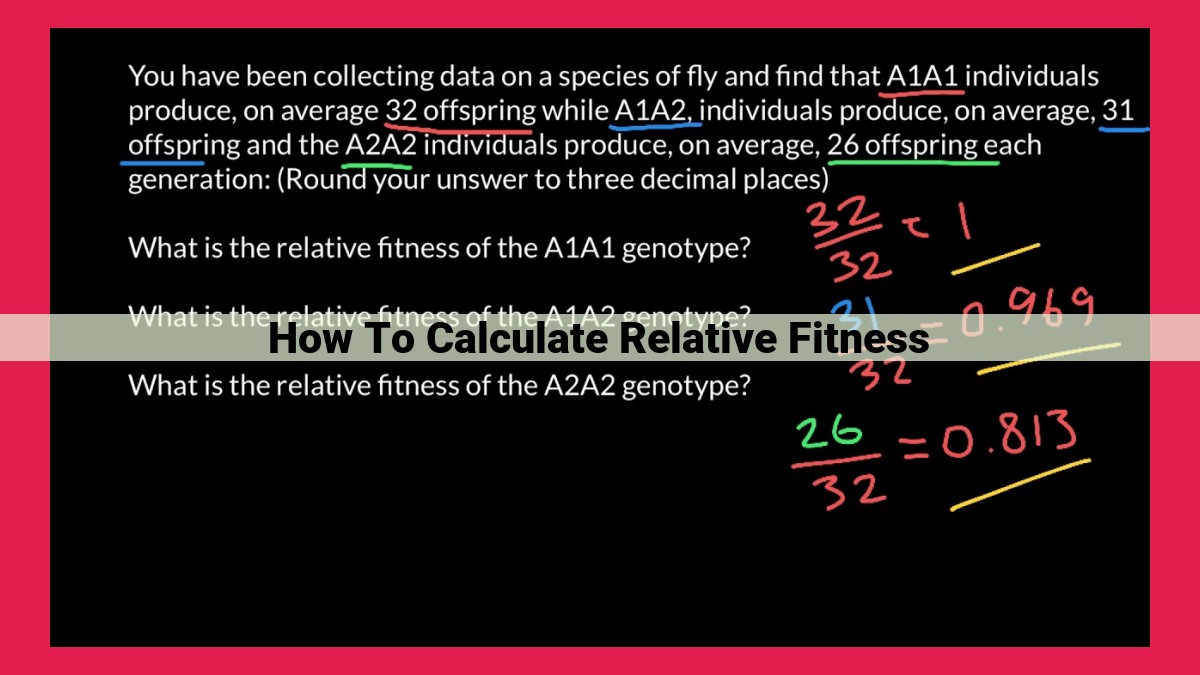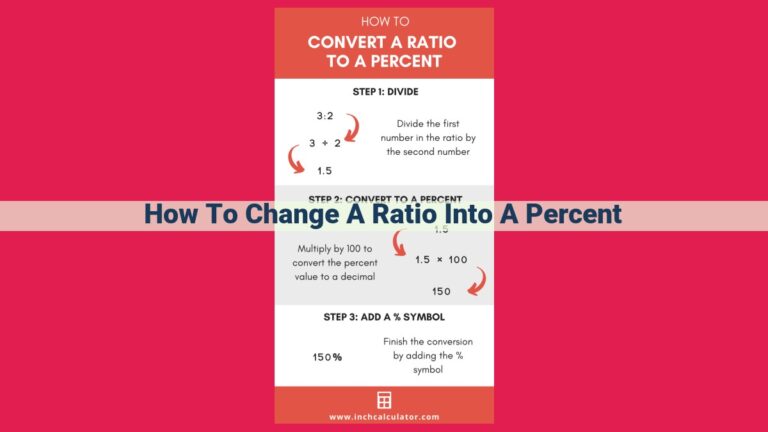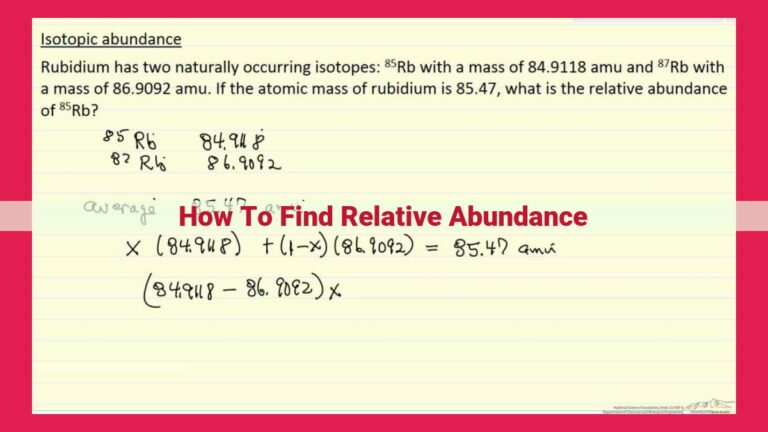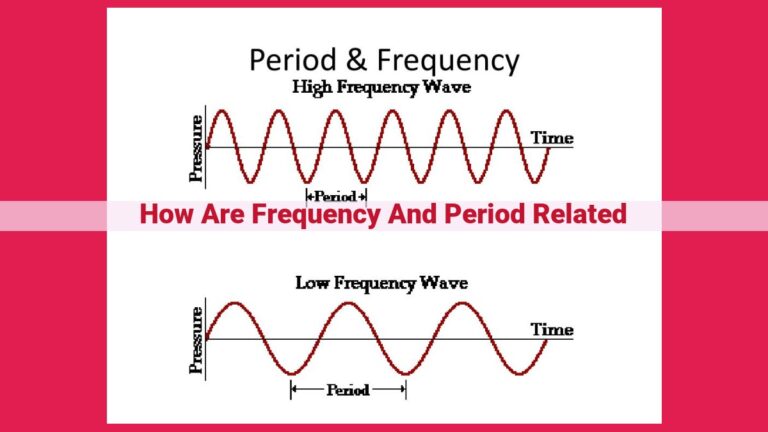Quantifying Reproductive Success: Understanding Relative Fitness In Populations

Relative fitness, a measure of an individual’s reproductive success relative to others, is calculated by dividing its absolute fitness (number of offspring produced) by the average fitness of the population. It considers both the number of offspring produced (fecundity) and their survival rate. Factors influencing relative fitness include natural selection, genetic drift, and environmental factors. Methods for calculating relative fitness include direct observation, mark-recapture studies, and demographic modeling.
Understanding Fitness: Unveiling the Difference between Absolute and Relative
In the realm of biology, fitness serves as a crucial concept that measures an organism’s ability to survive and reproduce in its environment. Fitness can be classified into two distinct types: absolute fitness and relative fitness.
Absolute Fitness: Measuring True Reproductive Success
Absolute fitness represents the actual number of offspring an individual produces throughout its lifetime. It reflects the individual’s overall reproductive contribution to the population. A higher absolute fitness indicates greater reproductive success, meaning the individual leaves more copies of its genes in subsequent generations.
Relative Fitness: Comparing Performance to the Population Standard
On the other hand, relative fitness measures an individual’s reproductive success in comparison to the average reproductive success of the population. It is calculated as the proportion of offspring produced by an individual relative to the average number offspring produced by all individuals in the population.
Understanding the difference between absolute and relative fitness is essential for comprehending how natural selection operates within populations. Natural selection favors individuals with higher relative fitness, as they contribute more genes to the next generation. Over time, this leads to the gradual increase in the frequency of favorable traits in the population, driving evolution.
Components of Relative Fitness
In the realm of population biology, understanding relative fitness is crucial for unraveling the intricate workings of evolution and species dynamics. Relative fitness measures the reproductive success of an individual compared to the average of its population. It encompasses two fundamental components: fecundity and survival rate.
Fecundity represents the number of offspring an individual produces throughout its lifetime. This aspect is directly related to the organism’s reproductive capacity, including factors such as age at sexual maturity, breeding season, and the number of mates. For instance, in a population of songbirds, individuals with higher fecundity may produce more chicks per nest, thereby increasing their contribution to the next generation.
Survival rate, on the other hand, gauges the probability that an individual survives to a given age. This component is heavily influenced by factors such as predation, disease, and environmental stresses. In a herd of deer, for example, individuals with lower survival rates may succumb to wolf attacks or succumb to illness earlier than their peers, reducing their potential to pass on their genes.
These two components collectively determine an individual’s relative fitness. Individuals with both high fecundity and high survival rates will produce more offspring that successfully reach adulthood, maximizing their genetic contribution to the population. Conversely, individuals with low fecundity and low survival rates will have a reduced impact on the gene pool due to limited offspring production and early demise.
Factors Influencing Relative Fitness: Unraveling the Determinants of Survival and Reproduction
Relative fitness, a crucial measure of an individual’s reproductive success, is shaped by a myriad of factors that influence its ability to survive and reproduce. These factors form the backbone of evolutionary dynamics and population biology.
Selection Coefficient: Nature’s Measuring Tape
Every genotype carries a certain degree of fitness, and the selection coefficient quantifies the impact of natural selection against a particular genotype. It gauges how strongly a particular allele or genotype is being selected against in a given environment. A negative selection coefficient indicates that the genotype reduces an individual’s fitness, while a positive coefficient signifies a fitness advantage.
Hardy-Weinberg Equilibrium: A Theoretical Benchmark
In an ideal population where evolution is not occurring, allele and genotype frequencies remain constant. This state of genetic equilibrium is known as Hardy-Weinberg equilibrium. Deviations from this equilibrium, often driven by other evolutionary forces, indicate that evolution is at play.
Mutation: The Raw Material of Evolution
Mutations, random changes in the DNA sequence, introduce new genetic variation into populations. Mutations can alter an individual’s fitness, either positively or negatively, by modifying their traits or physiological processes. They serve as the raw material for natural selection to work upon.
Migration: The Flow of Genes
The movement of individuals into and out of a population, known as migration, can also influence relative fitness. Migration can introduce new alleles and genotypes, potentially altering the genetic makeup of the population and its overall fitness profile.
Genetic Drift: The Role of Chance
Genetic drift, a random fluctuation in allele frequencies, can significantly impact relative fitness, especially in small populations. This stochastic process can lead to the loss or fixation of alleles, shaping the genetic and fitness landscape of populations.
Calculating Relative Fitness: Unveiling the Secrets of Natural Selection
Determining the relative fitness of organisms is crucial for understanding the intricate workings of natural selection and evolution. This blog post delves into the various methods used to calculate this important metric.
Direct Observation: Witnessing the Struggle for Survival
The most straightforward approach is direct observation, where researchers meticulously record the number of offspring produced and the survival rates of individuals over time. By observing entire populations, scientists can estimate the relative fitness of different genotypes or traits based on their reproductive success and longevity.
Mark-Recapture Studies: Tracking Individuals Through Time
Mark-recapture studies involve capturing, marking, releasing, and recapturing individuals to estimate population size and survival rates. By repeating this process over time, researchers can track the fate of individuals and determine how their traits influence their chances of surviving and reproducing. This method provides valuable insights into the relative fitness of different populations and the impact of environmental factors.
Demographic Modeling: Predicting Future Trends
Demographic modeling employs mathematical models to simulate population dynamics and predict future trends. These models incorporate data on birth rates, death rates, and migration patterns to estimate the relative fitness of different genotypes or traits. They allow researchers to explore the long-term consequences of natural selection and conservation interventions on population health and viability.
Understanding relative fitness is essential for unraveling the mysteries of evolution and predicting the fate of species in a changing environment. By uncovering the hidden secrets of fitness, we gain a deeper appreciation for the incredible diversity of life and the relentless forces that shape our natural world.
Applications of Relative Fitness
Relative fitness, a measure of an individual’s reproductive success relative to its population, proves invaluable in understanding various biological phenomena.
Natural Selection and Evolution
- Relative fitness reveals how natural selection favors traits that enhance survival and reproduction. Organisms with greater fitness have a higher chance of passing on their genes, leading to the gradual accumulation of beneficial traits within a population.
Population Dynamics and Conservation
- Fluctuations in relative fitness directly impact population dynamics. Measuring fitness allows biologists to estimate population growth rates, predict extinction risks, and develop targeted conservation strategies to protect vulnerable species.
Impact of Environmental Factors on Species
- Relative fitness serves as a sensitive indicator of environmental stress. Changes in fitness can signal disruptions in the ecosystem, such as pollution, habitat destruction, or climate change. By monitoring fitness levels, scientists can assess the impact of environmental factors on species health and identify critical threats requiring urgent attention.





